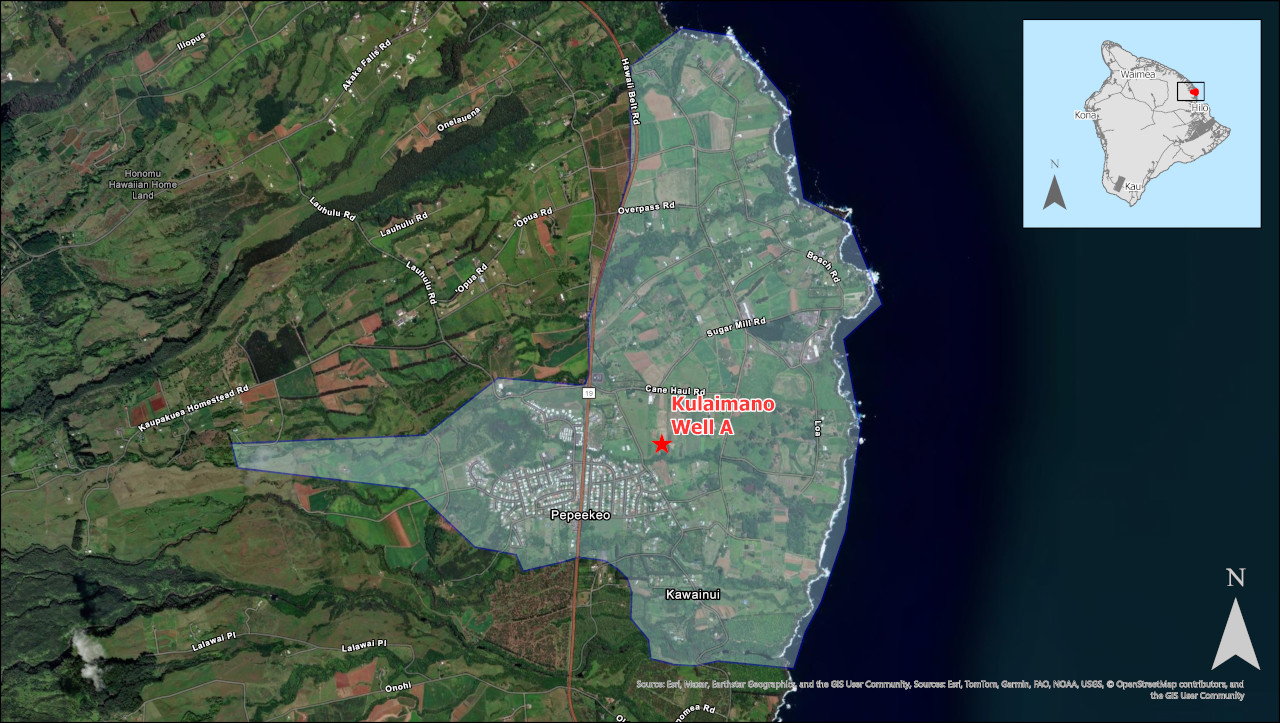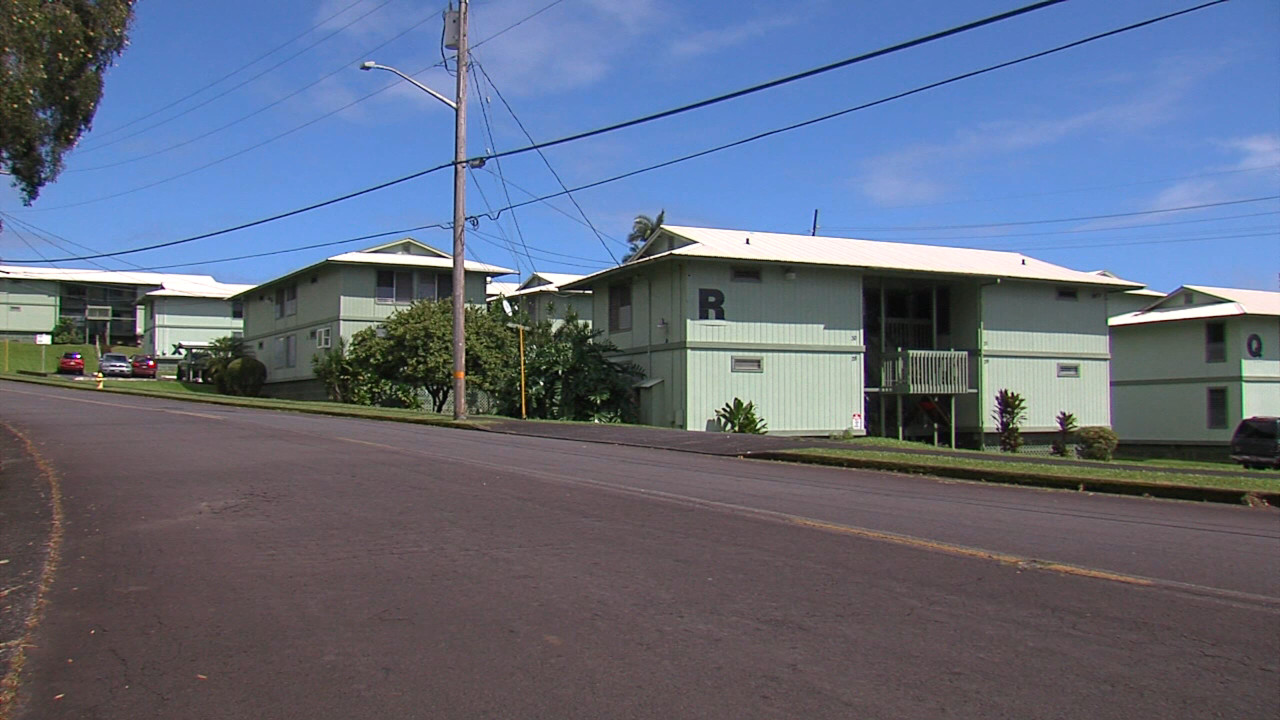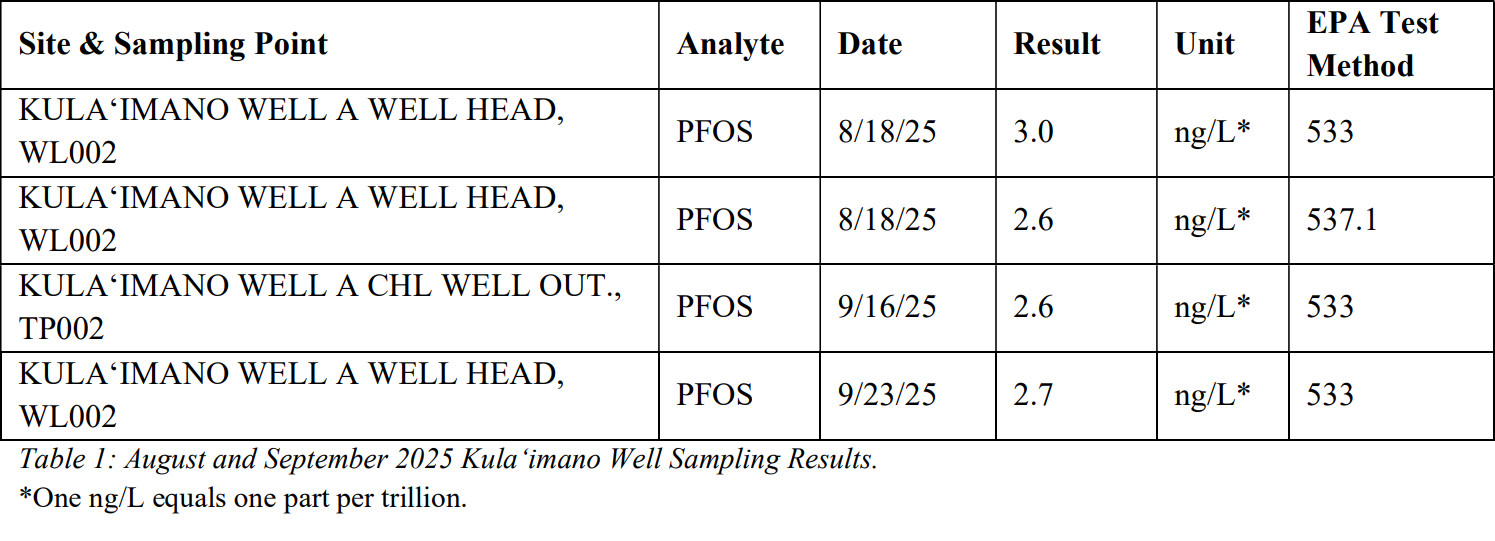(BIVN) – Low-levels of perfluorooctanesulfonic acid, or PFOS, have been detected for the first time in a Pepeʻekeo water well.
The Hawaiʻi County Department of Water Supply (DWS) on Tuesday said 2.6 to 3.0 nanograms per liter (ng/L) of PFOS was found in the Kulaimano Well A, one of the two groundwater sources in the Pepeʻekeo Water System.
The primary groundwater source in the Pepeʻekeo Water System is Kula‘imano Well B (mauka), which is currently under repairs.
The DWS said the test results “are within the acceptable limits of the safe drinking water standards set by the Environmental Protection Agency,” or EPA. The department added that “the drinking water that DWS provides meets all federal and state drinking water standards and thus it is safe to drink and use.”
PFOS is part of the group of perfluoroalkyl and polyfluoroalkyl substances (PFAS). The EPA’s Maximum Contaminant Level (MCL) for PFOS is 4.0 ng/L.
The PFOS detection was made during voluntary drinking water well testing across the island. DWS reported the findings to the Hawai‘i Department of Health in accordance with Hawai’i State Law.
From the Department of Water Supply:
PFAS are concerning for their persistence in the environment and links to adverse health outcomes in humans and animals, especially at high concentrations or with long-term exposure. PFOS is one of thousands of human-made compounds that have been commonly used in non-stick, non-stain, and water-resistant industrial and household products since the 1940s. In 2002, the primary US manufacturer of PFOS voluntarily phased out production of this chemical compound.
“Our customers’ safety is our top priority,” said Keith Okamoto, DWS Manager-Chief Engineer. “Although the new federal compliance regulations do not take effect for a couple of years, we did not want to wait to act. We are proactively sampling active drinking water sources across the island, over 60 locations, by the end of the year.”
Okamoto added, “The drinking water DWS provides meet all federal and state drinking water standards – it is safe to use and drink. While I am proud of our proactivity and openness on the issue of PFAS, it’s important to know most peoples’ exposure comes from everyday products – nonstick food packaging, stain-resistant fabrics and upholstery, and cosmetics, to name a few.”
In addition to sampling its wells, DWS will be testing the use of granular activated carbon for PFAS treatment implementation. The tests are scheduled to begin in early 2026.




by Big Island Video News4:26 pm
on at
STORY SUMMARY
PEPEʻEKEO, Hawaiʻi - The Department of Water Supply says the amounts are within the acceptable limits of the safe drinking water standards set by the Environmental Protection Agency.